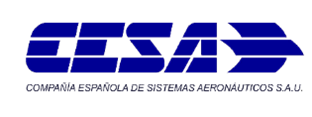CESA is involved as part of a consortium in the Fractal project “Development based on Spanish Technology for Advanced Manufacturing and Prototyping Systems of Strategic Components by Laser Powder Sintering”Laser powder sintering is an additive manufacturing technique in which the part is formed from thin layers of powdered material on which a high-power laser acts.
The laser fuses and solidifies the particles of each successive powder layer, which can be of different materials, such as plastic or metal.Additive manufacturing is experiencing an exciting time due to the advantages it provides over conventional manufacturing methods.
Specifically for the aeronautical industry, this type of manufacturing can result in substantial weight reduction in the aircraft, as it allow manufacturing parts with a much more complex and optimized shape. In response to this global trend, the Fractal project intends to unite Spanish science and industry to establish Spain as a player in Additive Manufacturing (AM) technology. The object is to generate new AM methods oriented to components of larger size, which current solutions cannot provide due to size, process time or cost limitations.
The consortium is led by the firm Etxe-Tar, which with its R&D unit Ikergune are the owners and inventors of the laser technology patent, and includes companies specializing in powder metallurgy for Additive Manufacturing, such as the AMES Group, and experts in the design of laser cells, Mesurex, Lantec 2000 among others. In addition, the consortium also includes the Laser Centre research unit of the UPM (Polytechnic University of Madrid), the Materials Department of CEIT, AIMME, the Mechanical Engineering Department of UPV/EHU (University of the Basque Country), BCAM – Basque Center for Applied Mathematics and the MIND/UB research group.From the start of the program, CESA has participated with the AIMME center in the selection, redesign of candidate parts and manufacture of prototypes by AM.
When the demonstration specimen has been manufactured, CESA and the CEIT center will work on validation testing for each of the demonstration specimens manufactured, and on the definition and application of non-destructive testing methods. All of these activities are meant to obtain a full production and quality control path that can constitute a CESA specification.
The expected duration of the Project is 4 years from the kick-off meeting that took place in October 2014, with 3 milestones marking the various activities of the Project: from the development of Supply Materials and the laser power supply system to the manufacture of the AM machine and the execution of validation and approval tests for the various prototypes and test specimens manufactured.









